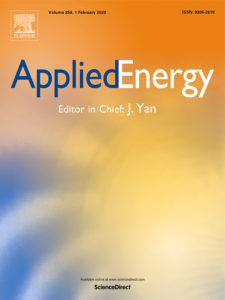Modeling wind power curtailment with increased capacity in a regional electricity grid supplying a dense urban demand
Modeling wind power curtailment with increased capacity in a regional electricity grid supplying a dense urban demand
- December 2016
- Peer-Reviewed Articles
- Multiple
 Waite, M., & Modi, V. (2016). “Modeling wind power curtailment with increased capacity in a regional electricity grid supplying a dense urban demand.” Applied Energy, 183, 299–317.
Waite, M., & Modi, V. (2016). “Modeling wind power curtailment with increased capacity in a regional electricity grid supplying a dense urban demand.” Applied Energy, 183, 299–317.
ABSTRACT: Many US states have targets for vastly expanding electricity generation from renewable resources. As installed wind capacity increases, several factors can lead to the curtailment of potential wind-generated electricity. Reliably estimating wind power outputs remains a challenge given the dearth of available hub height-altitude wind speed data and measured outputs from newer turbines. A methodology to make such estimates with large increases in wind capacity is described. A regional wind power model, including subroutines for evaluating Statewide grid constraints, and a linear program to solve the model were developed to assess capacity factors and curtailments with deep penetration of wind power into an existing grid under several constrained scenarios implied by demand, baseload generation and transmission. Actual zonal demand and interzonal transmission limits were used for the New York State electricity grid, which has significant potential for wind power mostly distant from the concentrated electricity demand in and around New York City.
The analysis indicates that current wind power outputs in the State underperform when compared to what the potential output should be at the same locations and could be if better wind regime sites were selected. Even with improved selection of sites and turbines, no constraints considered caused curtailment until systemwide capacity exceeds 6 GW; beyond this capacity, curtailment occurs only due to the presence of inflexible baseload generators until systemwide capacity exceeds 15 GW. At deeper penetrations of wind, mismatches in potential wind power supply and electricity demand coupled with continuously operating baseload generators have the most significant impact on the curtailment of wind-generated electricity, with much of the curtailment occurring during October-March. Interzonal transmission constraints further increase wind curtailment and would require very large transmission capacity increases to capture fully; however, more modest increases in transmission capacity can significantly reduce curtailment.




